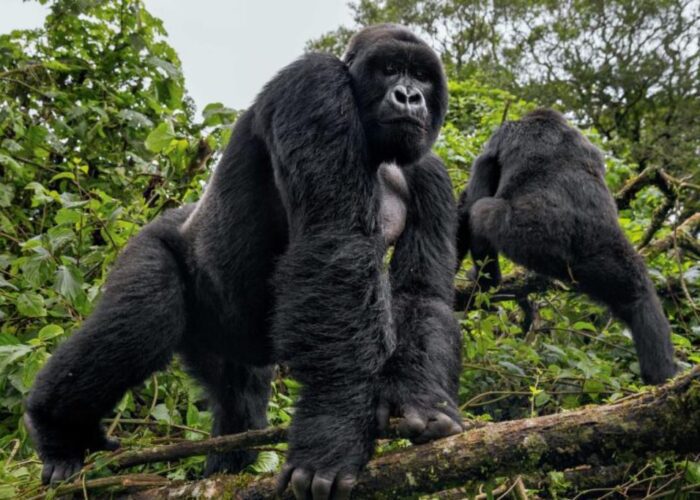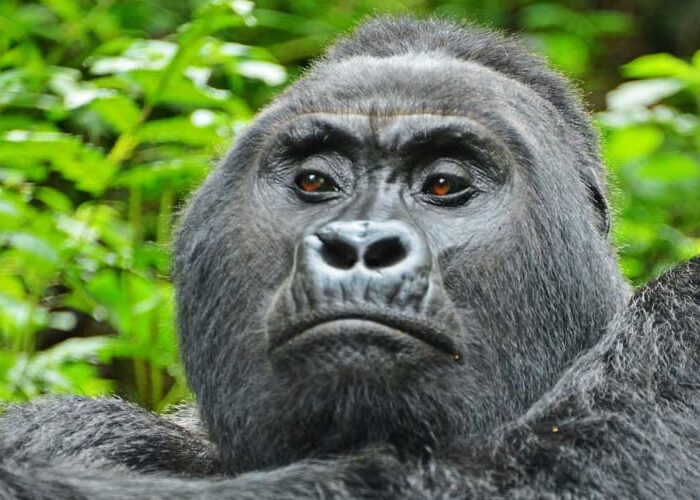Bwindi Impenetrable National Park: The Experience
Bwindi is home to half the world’s remaining population of critically endangered mountain gorilla. Out of these, several families have become habituated to humans, allowing small groups of people to track them and spend an hour in their company. The gorillas remain wild and the interaction takes place under the careful eyes of highly trained trackers. As gorillas are susceptible to human disease, the health restrictions for visitors are stringent. Due to the rugged terrain, only those older than 15 years are allowed to track. A day of gorilla trekking begins early, departing from your lodge with the dawn. The guides will meet and brief groups of visitors at the gathering point before setting off. The walk can be challenging, especially during Uganda’s two rainy seasons, which are from March to May and then again in November and December. Depending on where the gorillas were last seen, the trek can take anywhere between 40 minutes to six hours spent making your way through the tranquil green undergrowth that covers the mountain slopes, with several quiet encounters with the other denizens of the park en route. When the gorillas emerge from the foliage, time stands still as you enjoy their company for an hour. There is something deeply moving about being in the presence of these regal creatures.
Bwindi Impenetrable National Park: Birdlife
Bwindi should be on every birder’s itinerary. The park offers some of the best montane-forest (mountain-forest) bird watching in Africa. There are an estimated 350 bird species, with 14 not recorded anywhere else in Uganda. There are 23 birds unique to the Albertine Rift (which is 90% of all Albertine Rift endemics), including Neumann’s warbler and blue-headed sunbird. Migratory birds are present from November to April.
The birdlife in Bwindi is good year-round, but at its best in March and September. June and July have the least rain while March to mid-May has the most. Heavy rains might interfere with your bird-watching time. The main nesting season is in May and June, with food being abundant from late May through September. Migratory birds, though not a significant part of Bwindi’s attraction to birders, are present from November to April.



